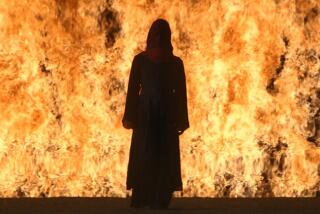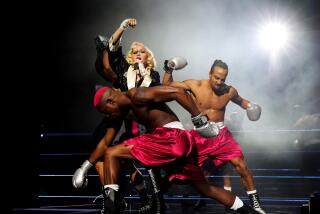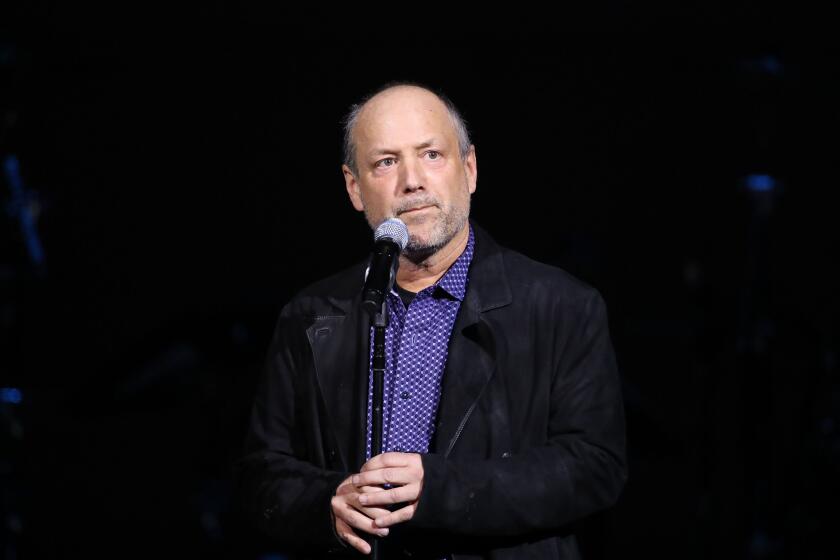Years after giving up singing, Linda Ronstadt is back on the charts with ‘Live in Hollywood’
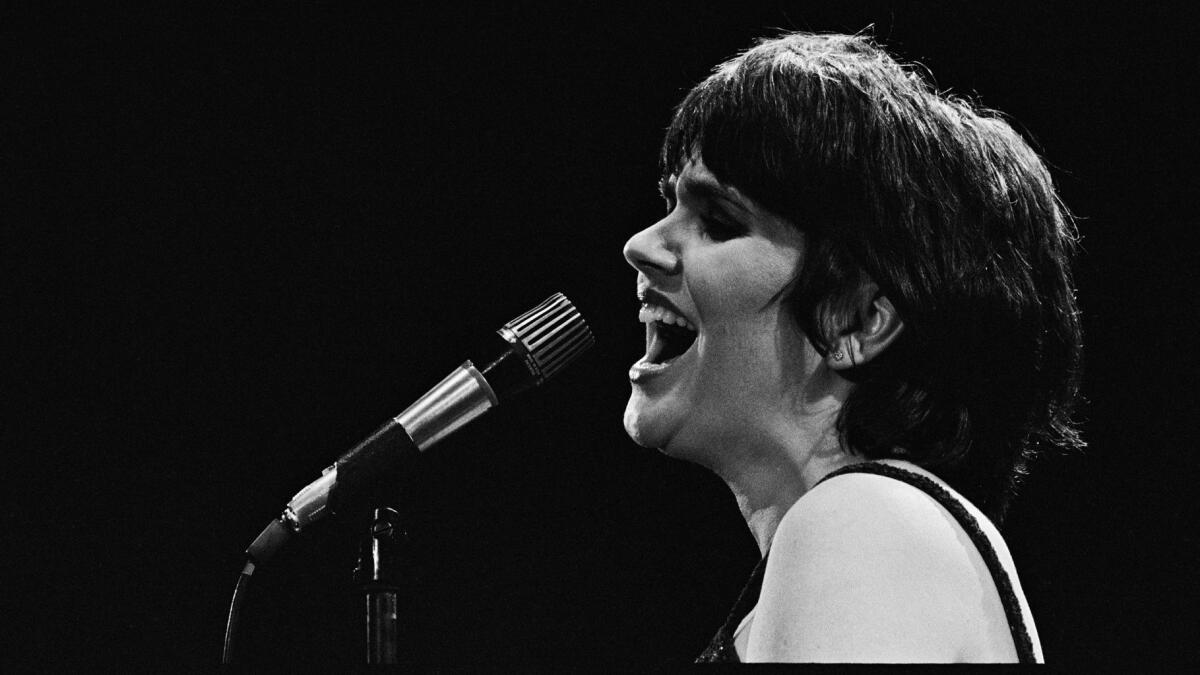
- Share via
The recent release of the first official live recording of Linda Ronstadt’s career, coming more than a decade after Parkinson’s disease forced her to abandon singing, is surprising on at least two fronts.
For starters, this celebrated perfectionist is not a fan of live albums in general, much less any with her voice front and center.
For the record:
1:45 p.m. Feb. 12, 2019An earlier edition of this post stated that Linda Ronstadt’s “Live in Hollywood” album entered Billboard 200 Albums chart at No. 7. It entered the publication’s Top Albums ranking at that spot.
“In the studio, you can do it right,” Ronstadt, 72, said in a rare interview from her Bay Area home shortly before last week’s release of “Live in Hollywood,” a session that was captured in 1980 at Television Center Studios for an HBO special that aired the same year. “I also start to sing better after I’ve been on stage for a while.”
Whatever qualifiers Ronstadt feels compelled to share, the album has been a quick hit with music fans. It quickly shot to No. 1 on Amazon.com’s CD sales ranking and as of Monday, it entered Billboard’s Top Albums national sales chart at No. 7.
It documents a performance near the end of her reign as the Queen of Rock of the 1970s, when she was regularly placing hits in the upper reaches of the pop chart before heading into tangential fields she found more rewarding: Gilbert & Sullivan operetta (“The Pirates of Penzance”); the Great American Songbook of pop standards (“What’s New,” “Lush Life” and “For Sentimental Reasons”); traditional Mexican music (“Canciones de Mi Padre,” “Más Canciones”).
“Live in Hollywood“ includes her distinctive interpretations of Chuck Berry’s “Back in the USA,” Roy Orbison’s “Blue Bayou” (don’t miss the spine-tingling final note of the last verse delivered en español), J.D. Souther’s “Faithless Love,” Warren Zevon’s “Poor Poor Pitiful Me,” Clint Ballard’s ‘You’re No Good,” and “Desperado,” that last song written by former members of her backing band who went on to form the Eagles.
Those are among the dozen tracks Ronstadt chose from among the 20 numbers in the original HBO performance.
“A lot of people I know did live records,” she said, noting that the preponderance of live recordings released commercially in the 1960s and ’70s did little to make her warm up to the idea herself. “Then, they’d go in and rerecord their vocals. Then, it’s not live, so what’s the point?”
Beyond that, for the most part, any recordings she authorized at her concerts was done strictly for educational purposes.
“We recorded some shows, but only on cassette tape, from a [mixing] board mix,” said Ronstadt, the subject of a recent CBS Sunday Morning profile. “The first thing I would do is listen back was wrong and see what we could fix.”
Otherwise, she said, “I don’t listen to my old stuff. It makes me realize how stupid I was onstage.”
Her brutally unvarnished self-criticism leaves those closest to her perplexed.
“I’m not really sure why, because she’s so good live,” said English musician, songwriter and producer Peter Asher, her manager in the ’70s, who produced many of her biggest hits, including 1974’s “Heart Like a Wheel.”
“People think of that L.A. scene in the ’70s as being just a bunch of laid-back, groovy guys. But on this album she really rocks,” Asher said, referring to “Live in Hollywood.” “There’s nothing ‘take it easy’ about it. And she does it all so effortlessly, it’s amazing.”
Part of Ronstadt’s tempered assessment of the project has to do with some unpleasant memories of the recording environment.
“All I remembered about doing the video is that we were all really hot and sweaty,” she said. “It was something like 103 degrees onstage. It was too hot to sing, really. I don’t know how they got everyone in that studio audience in there. We just showed up and did what we were told.”
Additionally, she said, “It was done for television; I wish it had been a little more of a hi-fi recording.”
Her present-day manager, John Boylan, who played guitar on some of her old studio recordings, oversaw updating of the 39-year-old audio tracks. He was adamant that there was no sweetening or technical tweaking of her vocals, other than bringing them up slightly in the mix.
What audiences today hear on “Live in Hollywood” is exactly what Ronstadt sang into her microphone.
“It was very minor burnishing of the sound to bring it up to 21st century standards,” Boylan said in a separate interview. “It was mixed originally by [sound engineer] Val Garay, so it was an excellent-sounding thing.
“She’s a total perfectionist when it comes to that,” he said. “I think Linda didn’t like it because it was mixed for the kind of small TV speakers that were common in 1980 — not exactly suitable for today’s 4K flat screens with surround sound. I brought her vocal up a little bit to make Linda happy. The reason it sounds as good as it does now is because it sounded so good then.
“There was no fixing [of her vocals] her at all,” Boylan said. “I mean it.”
To hear Asher tell it, it’s because none was necessary.
“I’m just impressed again at what a great singer Linda is,” Asher said. “Every time I hear her, it makes that more clear to me. Even singing rock ’n’ roll, which is her least favorite thing, she just nails it. The rock ’n’ roll intensity is just amazing.”
That’s due in equal parts to Ronstadt’s often scorching vocal and to the urgent backing from a band assembled from various quarters for the HBO taping: guitarists Danny “Kootch” Kortchmar, a fixture in James Taylor’s band in the ’70s and beyond, and Kenny Edwards, with whom she’d played since the 1960s in the Stone Poneys. The band also included Little Feat keyboardist Billy Payne, steel guitar ace Dan Dugmore, bassist Bob Glaub and L.A. studio and touring drummer Russ Kunkel. That’s Asher and singer-songwriter Wendy Waldman singing backup.
That was the source of one of the happy memories Ronstadt carries from the session.
“Danny was a great addition to the band, also Billy Payne — they really played well with each other,” she said. “I forgot how great that band was.”
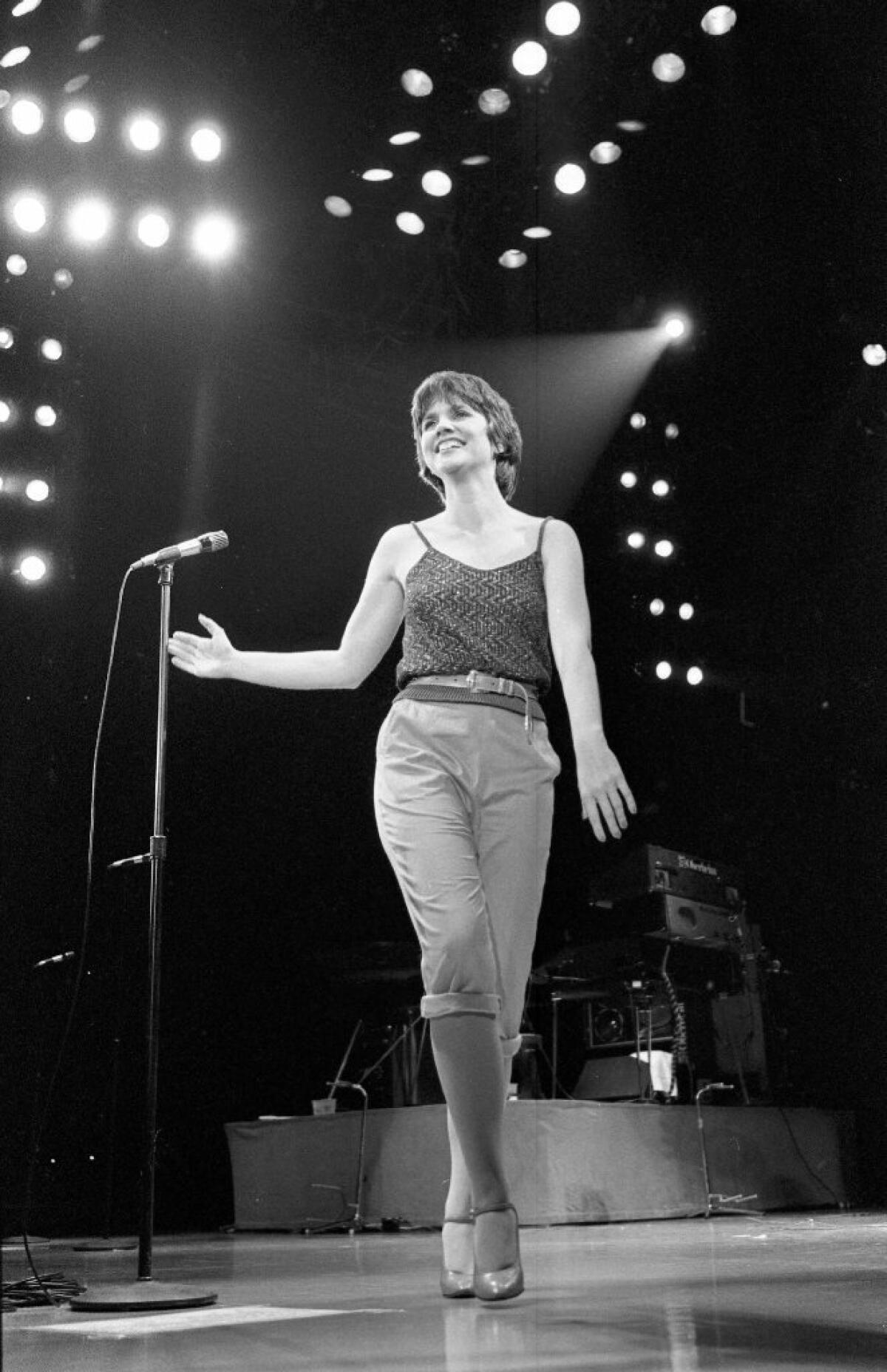
“Live in Hollywood” comes at a time when Ronstadt’s life and career are being explored in considerably greater depth by actor-filmmaker James Keach in a new documentary slated to premiere at the Tribeca Film Festival in April and air on CNN this year.
Oddly, the restoration and release of the new album almost didn’t happen.
Boylan said officials at Warner Music Group, the parent company of her label at the time, Asylum, were unable to find the master tapes. One day he struck up a conversation with another father at an ice rink where their sons’ hockey teams were practicing. The man turned out to be an audio engineer for Warner, who, in an extraordinary instance of serendipity, helped lead Boylan to the master tapes.
For Boylan, it’s the hand of fate at work on behalf of a singer he admired long before he signed on as her manager.
“I hope it reaffirms for everyone the idea that she was one of the iconic voices of my generation,” he said. “I hope it makes people remember how great she was live. People forget because her voice is gone, and you can’t see her in concert anymore.”
And Asher echoed those sentiments.
“I make no bones about it,” he said. “I’ve worked with some extraordinary female singers in my time, all instantly identifiable voices like Diana Ross, Cher, [10,000 Maniacs’] Natalie Merchant, people who sing two notes and you know immediately who it is. But of all the people I’ve worked with, for sheer knock-your-socks-off singing, I’ll take Linda.”
Follow @RandyLewis2 on Twitter.com
For Classic Rock coverage, join us on Facebook
More to Read
The biggest entertainment stories
Get our big stories about Hollywood, film, television, music, arts, culture and more right in your inbox as soon as they publish.
You may occasionally receive promotional content from the Los Angeles Times.

